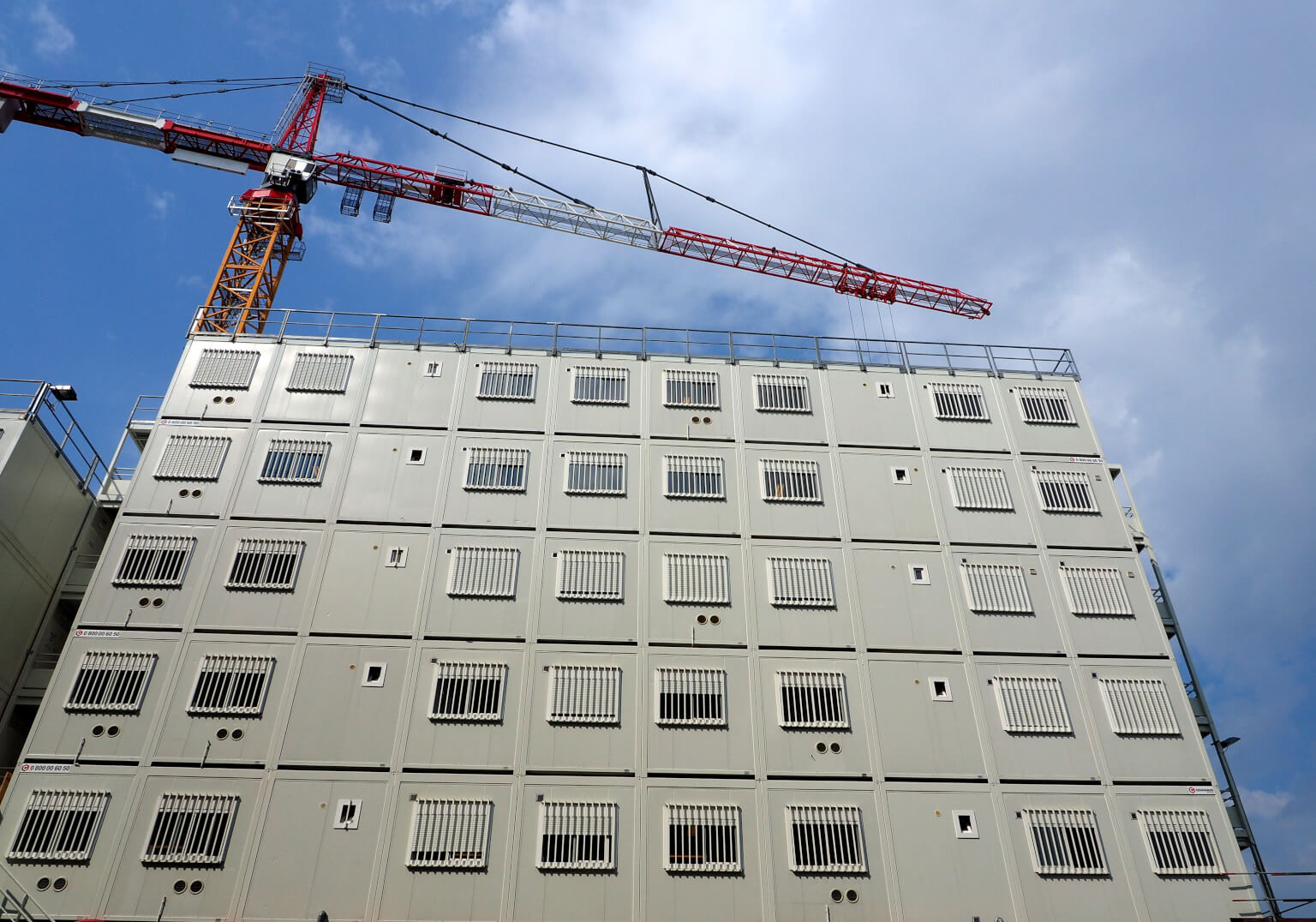By AIA Contract Documents

March 31, 2024
Off-site or “modular” construction continues to grow in popularity in the industry. In an effort to address this expanding market, the International Code Counsel and the Modular Building Institute collaborated to create two model standards: the ICC/MBI 1200-2021 Standard for Off-Site Construction: Planning, Design, Fabrication, and the ICC/MBI 1205-2021 Standard for Off-site Construction: Inspection and Regulatory Compliance (the “Modular Building Standards”).
These standards were promulgated in 2021 and invite jurisdictions to adopt them by reference, offering standards for both the fabrication of modules, as well as the inspection and regulation of both the modules and the completed building. These standards were first adopted by Salt Lake City, Utah in 2021. Virginia then adopted the Modular Building Standards, which became effective January 18, 2024. Both chambers of Utah’s legislature have passed a bill to adopt the standards as well, positioning the state to follow closely on Virginia’s heels.
This update will provide readers with an overview of modular building, as well as the standards adopted by the Commonwealth of Virgina.
What is Off-Site or “Modular” Construction?
Modular construction continues to increase its market share, but it is not a new or novel method of construction. For instance, as many know, prefabricated homes were available to order from the Sears, Roebuck & Co. “Sears Modern Homes” catalog. Beginning in 1916, Americans could purchase a variety of home types and floor plans that would then arrive in pre-cut pieces, often on a freight car, to be assembled on site. Sears even offered prefabricated schoolhouse kits.
Modern prefabricated construction may look somewhat different, but its principles are largely the same. Key components are manufactured away from the project site then delivered and assembled or installed onsite. Generally speaking, modular construction projects can be sorted into one of two categories: volumetric or nonvolumetric modular construction.
Volumetric modular construction involves the off-site fabrication of three-dimensional units or “modules” that are lifted and installed to form the building. These can also include plumbing and electrical systems. In contrast, nonvolumetric modular construction involves the off-site construction of modules more akin to individual components or “sub-assemblies” that are combined onsite to form the building. Nonvolumetric fabrication can take many forms, but often involves the fabrication of walls, flooring, roof joists and joinery materials. These are more comparable to the Sears Modern Homes kits.
Modular construction has grown alongside with the expansion in construction technologies such as Building Information Modeling (“BIM”) and Computer-Aided Design (“CAD”) software. CAD enables more precise design and drafting which is critical to ensure the components fit together when installed onsite. Similarly, BIM provides a three-dimensional model of the project. BIM also fosters increased cooperation between project participants which is critical when the majority of construction is taking place off-site.
Owners, contractors, and design professionals are increasingly opting for modular construction methods. One significant advantage of modular construction is the possibility for a more streamlined construction process. While not guaranteed, speed and efficiency can be gained by parallel fabrication of multiple modules off-site, as compared to linear onsite construction. Further, common threats to the schedule and critical path work such as weather disruptions and site conditions can be minimized in a modular construction project. Many have also come to see modular construction as a preferable alternative to traditional construction due to potential cost savings, and more effective cost forecasting.
2021 Off-Site Construction Standards
The Modular Building Standards were developed in collaboration between the International Code Council and the Modular Building Institute. Because existing modular building codes varied greatly state-to-state, the ICC/MBI standards were developed in an attempt to standardize national practices in hopes of increasing use of modular building. In fact, many states did not have off-site construction codes whatsoever.
ICC/MBI 1200-2021 and ICC/MBI 1205-2021 Standard for Off-Site Construction were developed by a group of stakeholders across various construction industry verticals beginning in 2019. This “Consensus Committee” is comprised of builders, manufacturers, users, and government regulators. In order to aid adoption efforts, both Modular Building Standards contain a standardized resolution to adopt.
ICC/MBI 1200-2021 Standard for Off-Site Construction: Planning, Design, Fabrication provides guidance and requirements for the manufacturing facility, fabrication, transportation and storage, and on-site installation. ICC/MBI 1205-2021 pertains to inspections and regulatory compliance.
Conclusion
The adoption of these Modular Building Standards represents a major development in the field of construction regulations. Virginia is the first to adopt the code standards promulgated by MBI and ICC, but more seem poised to follow suit. For additional information on modular and off-site construction, the AIA® offers a free guide to modular & off-site construction, available here: Modular & off-site construction guide (aia.org)
Save time and minimize risk with the most trusted contracts in the construction industry – powered by AIA Contract Documents’ next-generation platform, Catina. Request a Demo Here
AIA Contract Documents has provided this article for general informational purposes only. The information provided is not legal opinion or legal advice and does not create an attorney-client relationship of any kind. This article is also not intended to provide guidance as to how project parties should interpret their specific contracts or resolve contract disputes, as those decisions will need to be made in consultation with legal counsel, insurance counsel, and other professionals, and based upon a multitude of factors.